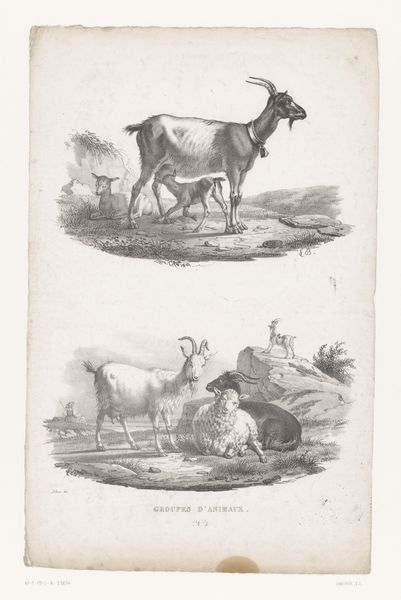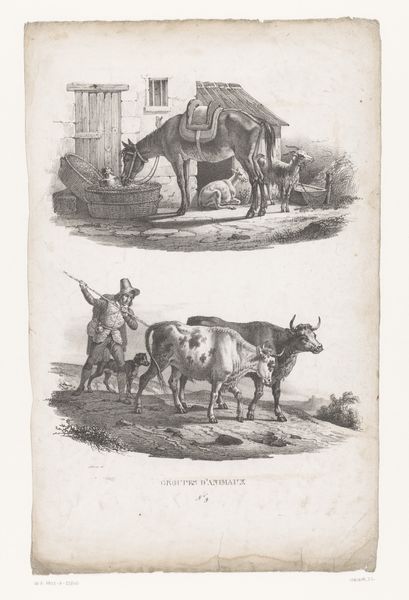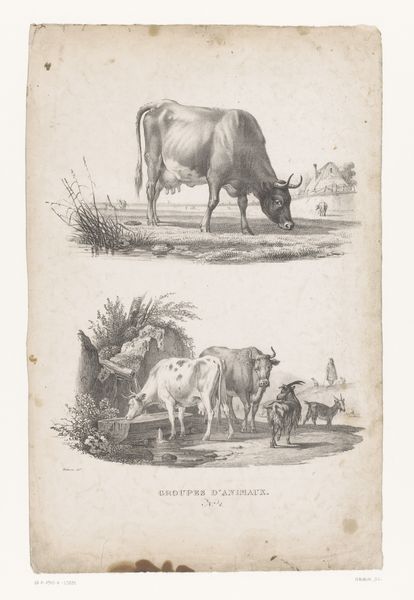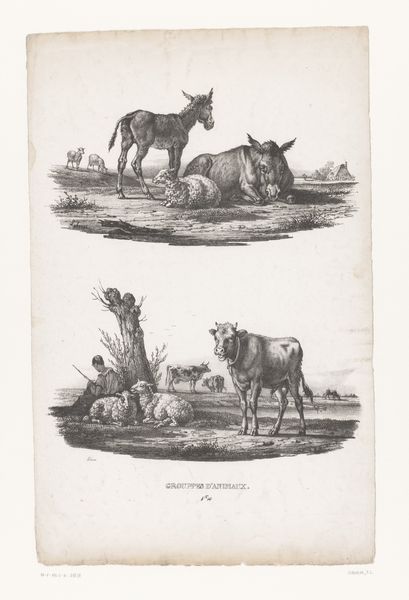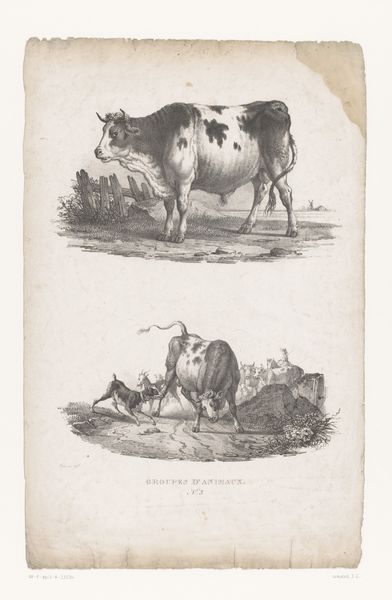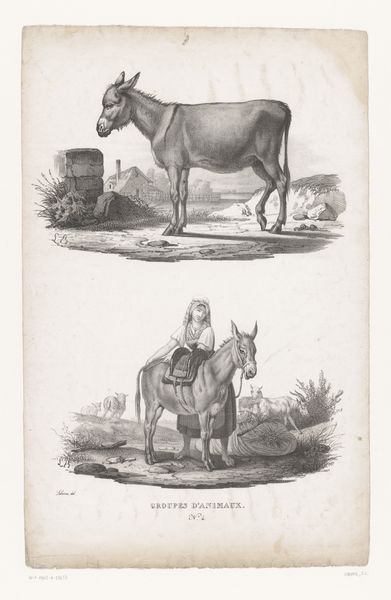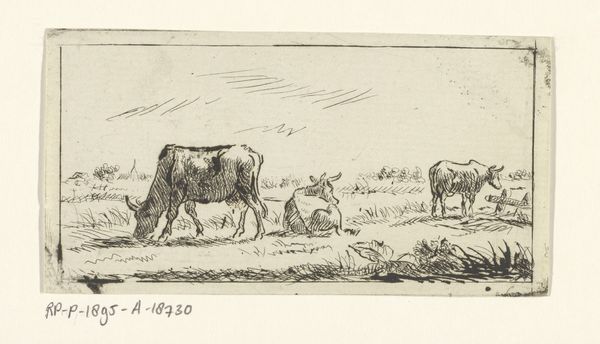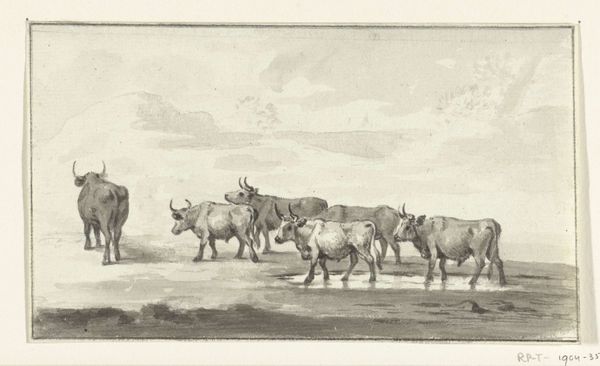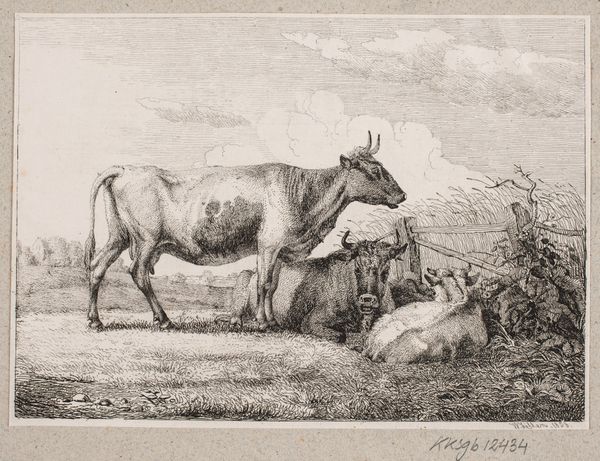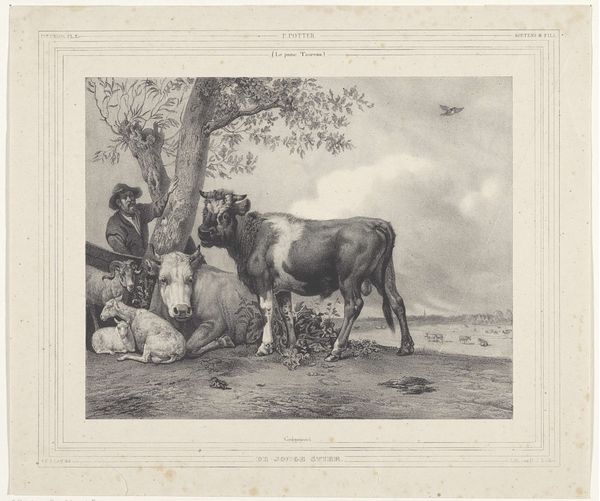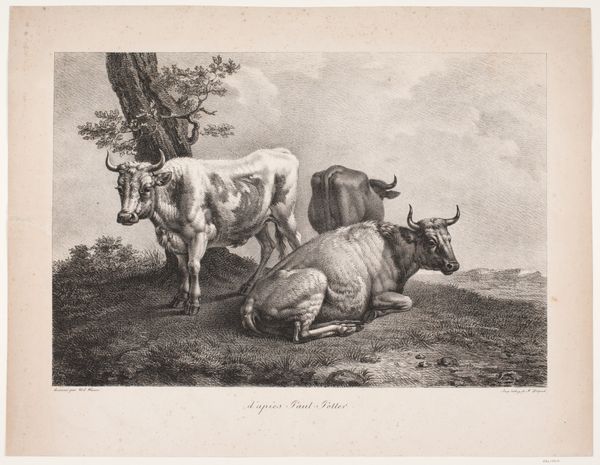
drawing, pencil
#
portrait
#
drawing
#
imaginative character sketch
#
light pencil work
#
quirky sketch
#
animal
#
sketch book
#
landscape
#
personal sketchbook
#
sketchwork
#
ink drawing experimentation
#
romanticism
#
pencil
#
sketchbook drawing
#
genre-painting
#
storyboard and sketchbook work
#
sketchbook art
#
realism
Dimensions: height 473 mm, width 304 mm
Copyright: Rijks Museum: Open Domain
Editor: This drawing by Joseph Louis Leborne, from 1828 or '29, titled "Two Cows and a Shepherdess on a Donkey with Livestock" has such a gentle quality, almost nostalgic. What do you see in this piece beyond its surface depiction? Curator: I see a romanticized vision of rural life, but it’s crucial to ask, for whom? Leborne likely produced this drawing for an urban audience, one perhaps longing for an imagined, simpler past. We must consider how such representations reinforce social hierarchies, obscuring the realities of labor and land ownership within agricultural communities. Who is present, and significantly, who is absent in this idyllic scene? Editor: That's interesting! I hadn't thought about it that way. I was focusing on the relationship between the animals and the shepherdess. Curator: And that relationship itself needs interrogation. How does the image frame the shepherdess's power relative to the animals? Are they portrayed as docile and dependent, thus reinforcing a certain narrative of human control over the natural world? Consider also, the lack of contextual detail; the generalized landscape reinforces the idea of rural life as a blank canvas onto which the urban imagination projects its desires. Do you see it shifting toward art that empowers those actually engaged in agriculture? Editor: I do. So, looking at it now, it makes me question whose story is really being told. The drawing's artistic skill is undeniable, but is it perpetuating an inaccurate vision of that time? Curator: Exactly. It is crucial to analyze art from the past critically, to ask difficult questions about representation, and to seek out narratives that challenge dominant ideologies. Even a seemingly innocent sketch like this speaks volumes about the social and political landscape of its time. Editor: This has given me a completely new way to interpret historical art. It feels like there is much more that lies under the surface than I knew.
Comments
No comments
Be the first to comment and join the conversation on the ultimate creative platform.
